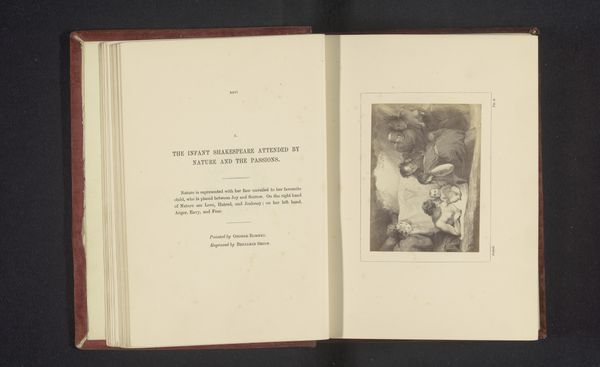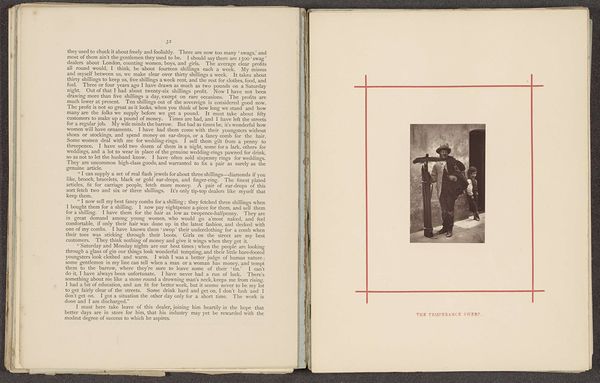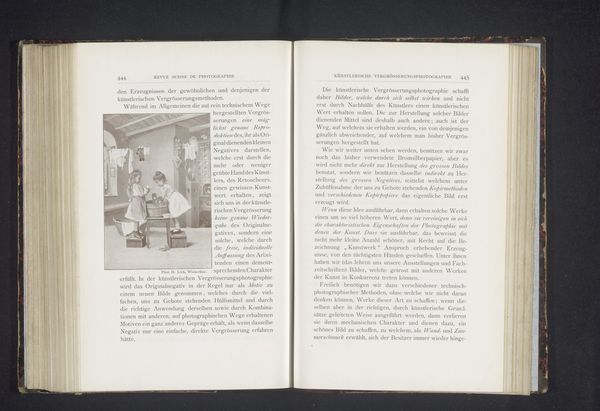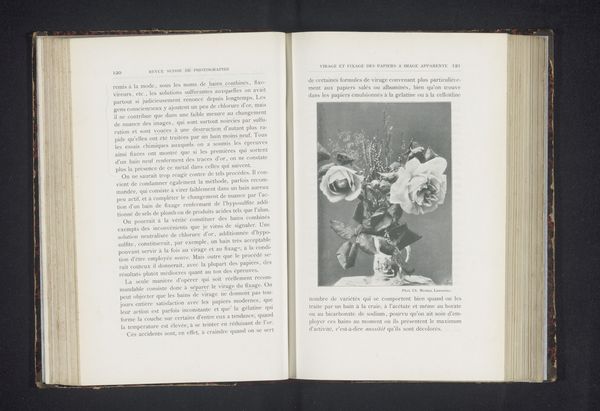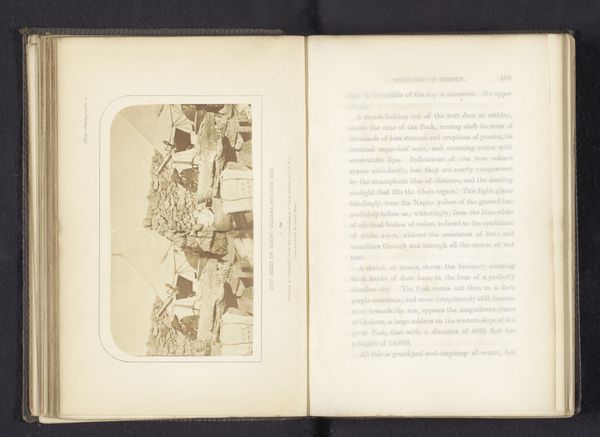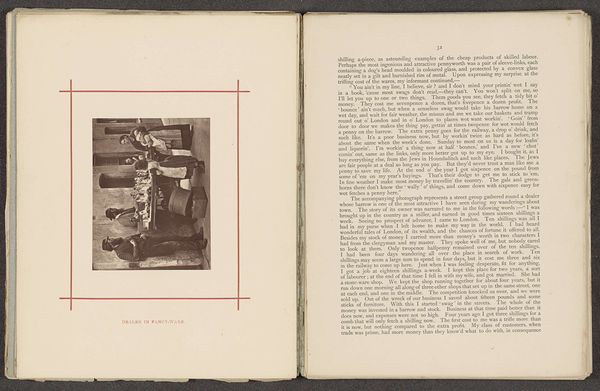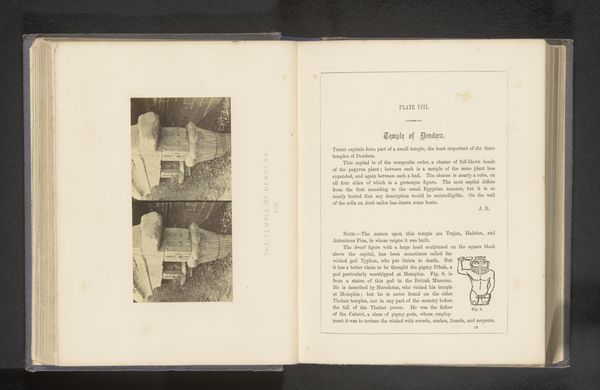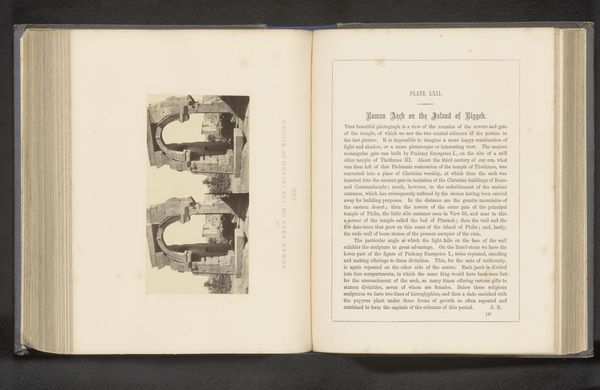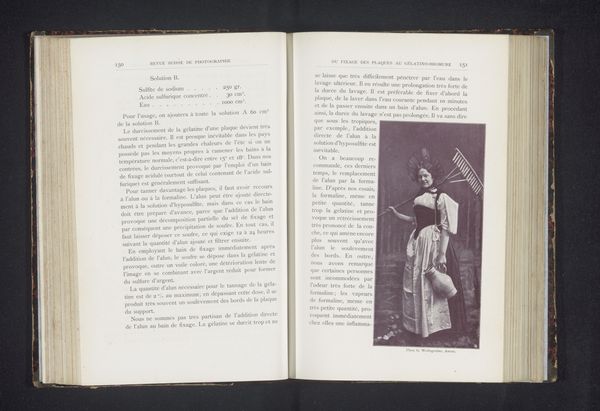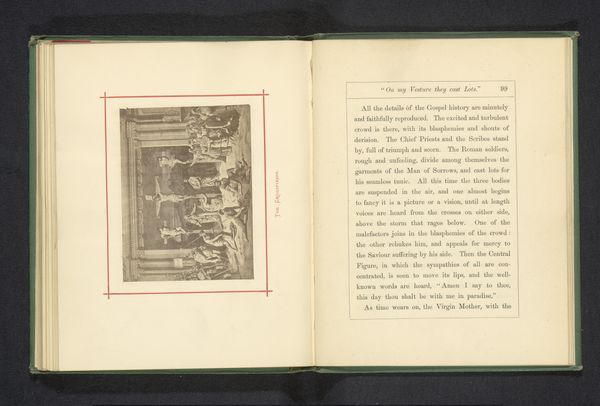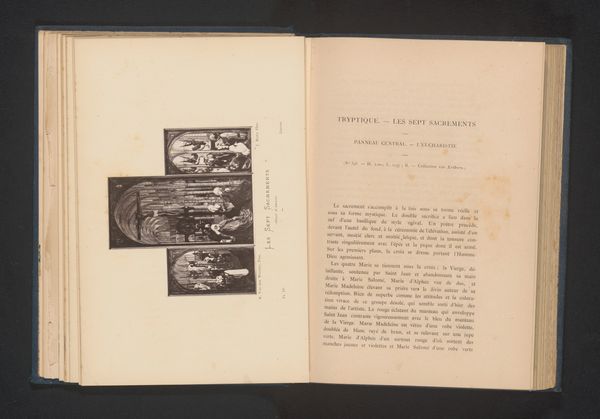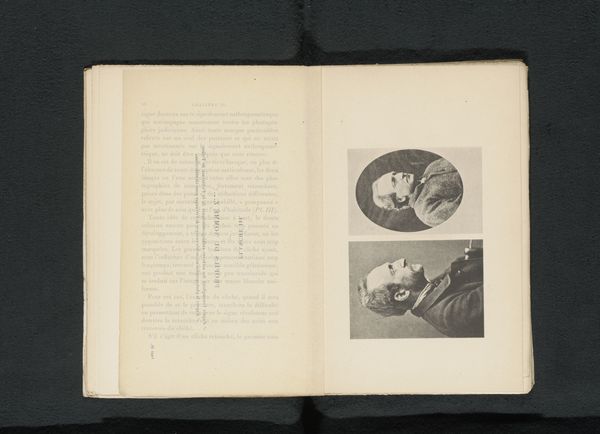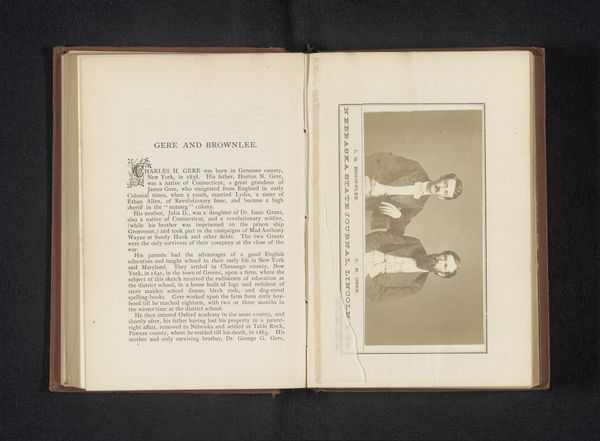
Portret van het echtpaar Fenayrou, attributen die zijn gebruikt bij hun moord en een slachtoffer before 1890
0:00
0:00
print, photography
# print
#
photography
#
photojournalism
#
history-painting
#
academic-art
Dimensions: height 174 mm, width 105 mm
Copyright: Rijks Museum: Open Domain
Curator: Let’s spend some time contemplating this arresting image. “Portret van het echtpaar Fenayrou, attributen die zijn gebruikt bij hun moord en een slachtoffer”—Portrait of the Fenayrou Couple, Attributes Used in Their Murder, and a Victim. This pre-1890 composite is truly striking. Editor: My first impression is that the juxtaposition of images – the innocent looking couple alongside those brutal instruments – creates a chilling narrative. Curator: Exactly. It’s presented almost like a police file opened to reveal the anatomy of a crime. Look at the composed portrait of the couple, seemingly unaware of the horror that awaits them, contrasted with the crude, harsh reality of the murder weapons. Editor: And the body! The image of the victim adds a visceral element, situating the act of violence within a particular historical and societal context. One has to wonder about the journalistic drive to capture the violence inflicted onto this person... Curator: And then there's that looped rope framing the collection of images. Almost as though fate is circling the victims and perpetrator both. To consider the tools used in the act alongside this portrait gives us a real peek into a true crime. Editor: The arrangement feels deliberate, even theatrical. The academic art world's focus on realism and moralizing tales clashes starkly with the actual violence depicted. What does it mean to aestheticize someone’s violent death in this way? To consume and potentially valorize a murder through art. Curator: Yes. In some ways it transforms what we know as the genre of history-painting into almost a kind of "true-crime" exposé! Didactic maybe, or designed to instill a fear or even distrust in marriage... We will likely never know the full intention. Editor: I agree. We are still in the grip of images portraying sensational crime stories, which points towards the complex, intertwined narratives of power, gender, and violence that are just as relevant now as they were back then. The way such a composition could have shaped contemporary understanding is truly mind-blowing. Curator: Precisely. This offers us much more than an insight into the past; the echoes resonate loudly, begging us to ask what it means to be implicated even as spectators.
Comments
No comments
Be the first to comment and join the conversation on the ultimate creative platform.
